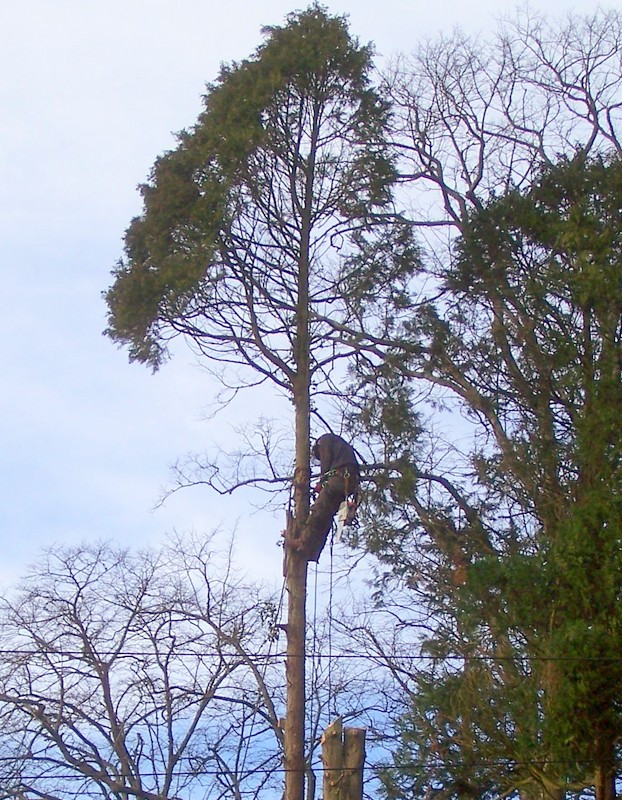Anyone who happened to pass the Old Churchyard in Vicarage Hill on Saturday 23rd January would easily have known that some tree surgery was taking place by the large trucks parked outside. The job in hand was in fact the removal of two large trees growing in a very close clump of three trees. All the main work was very successfully completed in a single day and that almost concluded the protracted story of this felling operation. The word “almost” is used because there is still one element of work to be completed.
The story begins in October 2015 when, in accordance with our normal practice, we invited the Waverley Tree Officer to advise us on what permitted work needed doing on this site within the Old Church Lane Conservation Area. He very kindly did this thoroughly and in subsequent months the necessary permissions were obtained and all the recommended work carried out. However, he had added at the end of his report a suggested recommendation for consideration later. This was for the removal of either one or two trees in the clump of three which were two cypresses and one semi-mature yew. The cypresses were considered poor quality trees and their removal would “increase light filtration into the amenity area and give growing space for the yew growing below their crowns.”

This suggestion was not a priority and was therefore not reviewed in detail until the end of 2019. It was then agreed that, although the trees in question undoubtedly made a contribution to carbon capture, this would be outweighed by the increase in biodiversity likely to accrue from getting more light into the site which was becoming increasingly dark (a problem also being encountered in the Middle Bourne Lane Community Garden). Whether to fell one, two all three tress was also debated within the Group and with the Church authorities. The final decision by the Vicar in summer 2020 was to lose all three trees. However, at that very moment it was noted that the nearby large yew tree was showing signs of stress. This raised a worse case possibility of felling the clump of three trees and then losing the large yew as well. After a careful risk assessment and consultation with both Waverley and a local tree expert it was decided to fell the two large trees but leave the small yew as an insurance against possible loss of its larger cousin. The latter was not considered a strong possibility because yews are traditionally long-lasting trees and the present stress is most likely to have been caused by a series of long dry summers. But it is always best to have insurance in place.

Once this final decision had been made work could begin but not before the bat box we had installed on one of the target trees had been inspected and taken down. This was not a straightforward operation in view of the protected status of bats and it became clear we had to have a qualified bat handler present in case the box had residents. We were very fortunate that an exceedingly helpful and generous volunteer from the Surrey Bat Group came to our rescue and took down the box and repositioned it. No bats were present.

Felling in progress 
Felling in progress

Scene (in the snow) after felling showing the new openness in OCY
So, the two large cypress trees: Cypress Lawsonia and Cypress Pinopsida (or Thuja) have gone, and certainly it can be seen already that more light is getting onto the northern part of the site. The remaining yew can now be seen clearly for the first time and appears a rather better tree than imagined. It has a slight lean but, with some careful surgery, should develop into a fine tree in keeping with others on the site.
One little mystery has come to light during this lengthy process. The large stressed yew is one of two in OCY with plaques on them stating they were planted in 1863 to commemorate the wedding of the Prince of Wales who was to become King Edward VII. While looking at the tree on 26 th January, the experienced tree surgeon thought it looked older than 160 years. This exactly what our local tree surgeon had said when assessing the tree. If these two knowledgeable people are right, what actually happened in 1863?
